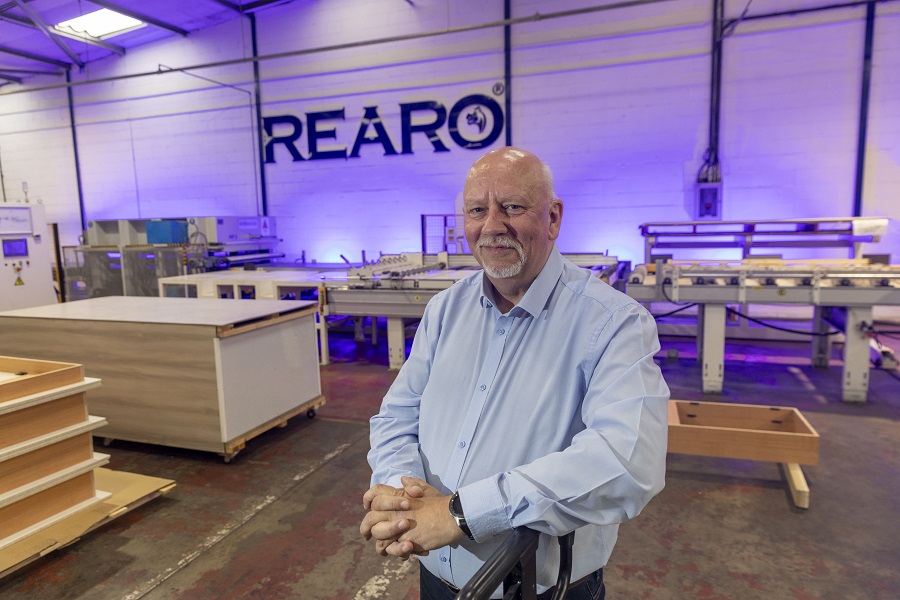Robert Bennett: Why the smallest room in the house is now big business

Robert Bennett
Robert Bennet, head of sales and marketing at Rearo, highlights the changing role of the bathroom over the years, and how that has impacted developers and suppliers in the construction industry.
The only time most of us give any deep or meaningful thought to our bathrooms is when we are refitting them. Rarely will we consider how much the very nature of the bathroom has changed in our lifetimes, and those of our parents.
Anyone brought up in the 1960s, or before, will remember the bathroom as a purely functional area. Some people from those eras may not even have had an indoor toilet and, for many of them, washing was done at a communal sink or ‘jaw box’.
As with many other aspects of life, the 1970s introduced Britain to the idea of interior design and, while bathrooms retained their functionality, this was within a much wider concept of individual taste and style.
Since then, they have become an essential part of our lives and identity, and we give more thought to their design than to many other areas of our shared living space.
The past 20 years, in particular, have seen a paradigm shift in our understanding and appreciation of the bathroom, which has become a place of relaxation, in which people spend quality time and assert their own needs.
This year marks the 20th anniversary of Rearo’s Selkie range of bathroom wall panels, and the landmark has given us cause to pause and consider how the collection has changed in that time, in particular how we research and select new patterns and designs to match public expectations, compared with 2004.
As well as being more intensive and detail-orientated, the process of developing a new range now requires us to consider social, environmental, and technological factors.
The modern bathroom must encompass fashions and trends in interior design, while also retaining some of the ‘greener’ principles developed over the past couple of decades.
A wider selection of materials is now available in different styles, adding architectural interest to the bathroom, taking it beyond functional necessity and into something visually striking.
Back in the early 2000s influences to bathroom design included technological marvels like iPods, Blu-ray, and Windows XP, alongside design trends that ranged from questionable to enduring. While lime green everything may have fallen out of favour, the shabby chic decor of distressed paint and vintage style found new life.
The era also embraced jacuzzi and spa baths, but concerns over maintenance and hygiene have shifted focus towards simpler, free-standing baths for a more hassle-free bathing experience.
Even global events like South Africa hosting the 2010 World Cup influenced bathroom design trends, fostering demand for local elements, such as woven baskets and indigenous wood, reflecting a surge in national pride.
Factoring in all of these elements and trends into the evolution of the Selkie range has required a meticulous process that combines market research, design exploration, and practical testing.
Named after the mythical Selkie, a mermaid-like creature, the range embarked on a path of innovation that has continued to define modern bathroom aesthetics.
In the early years, glossy, bold colours and sparkles dominated, reflecting the tastes of the time. However, as design preferences shifted over the years, so did Selkie.
Today, we see a preference for more industrial stone and slate styles, with matte finishes, highlighting the adaptability and responsiveness of Rearo to evolving trends.
Market research forms the bedrock of our design process more than ever, drawing insights from various sources to ensure we stay abreast of evolving trends and consumer preferences.
Apart from supplier inputs and internal feedback, our team leverages external resources to enrich our understanding of design trends.
Attending trade shows like Interzum in Cologne provides firsthand exposure to the latest innovations and styles in furniture production and interior design. Additionally, commissioned reports from design consultants, such as Eva Hoernisch, offer valuable perspectives gleaned from prestigious events like Milan Design Week.
Over several months, our team embarks on a journey that begins with sourcing materials, understanding market trends, and culminates in the creation of innovative and appealing products.
Engaging with laminate suppliers over three or four months, the team explores the latest offerings and gathers insights from customer feedback and industry trends.
Suppliers present new developments, such as enhancements to textures and finishes, providing samples and swatch packs for evaluation. These samples serve as the building blocks for the creation of the new range.
Research is not limited to supplier interactions; it extends to understanding customer preferences and market demands. Branch managers play a crucial role in this phase, offering valuable insights gleaned from direct interactions with customers.
By analysing sales figures and customer feedback, the team identifies popular items to retain, evaluates intermediate sellers for potential inclusion, and eliminates less popular ranges. This process ensures that the new range is both market-driven and customer-centric.
Visually sorting through sample swatches, the team categorises designs into groups, maintaining a balance between established favourites, innovative styles, and trend-focused decors. This meticulous curation aims to offer a diverse, yet cohesive, collection that appeals to a wide audience. Moreover, the team ensures pricing alignment with supplier offerings before proceeding further.
When we are satisfied with the samples and pricing, the team orders full-size laminate samples of selected styles for in-depth evaluation. Practical testing is essential to assess the quality and feasibility of production.
Laminate is bonded onto panels to simulate real-world conditions, allowing the team to identify any potential issues, such as uneven textures or thickness variations. Only after passing these rigorous tests are the selected designs deemed suitable for production, and orders are placed with the respective suppliers.
While we don’t have a dedicated consumer panel, feedback channels are embedded within the organisation.
Showroom staff and branch managers serve as conduits for customer feedback, providing valuable insights that inform product decisions. This decentralised approach ensures that the voice of the customer is integrated into the design process, facilitating the creation of products that resonate with end-users.
The bathroom maybe the smallest room in the house, but its importance has grown significantly over the past two decades. More sophisticated and varied consumer tastes have required us to develop an advanced research and design strategy, to ensure we continue to meet and exceed our customers’ demands. Here’s to the next 20 years.
















